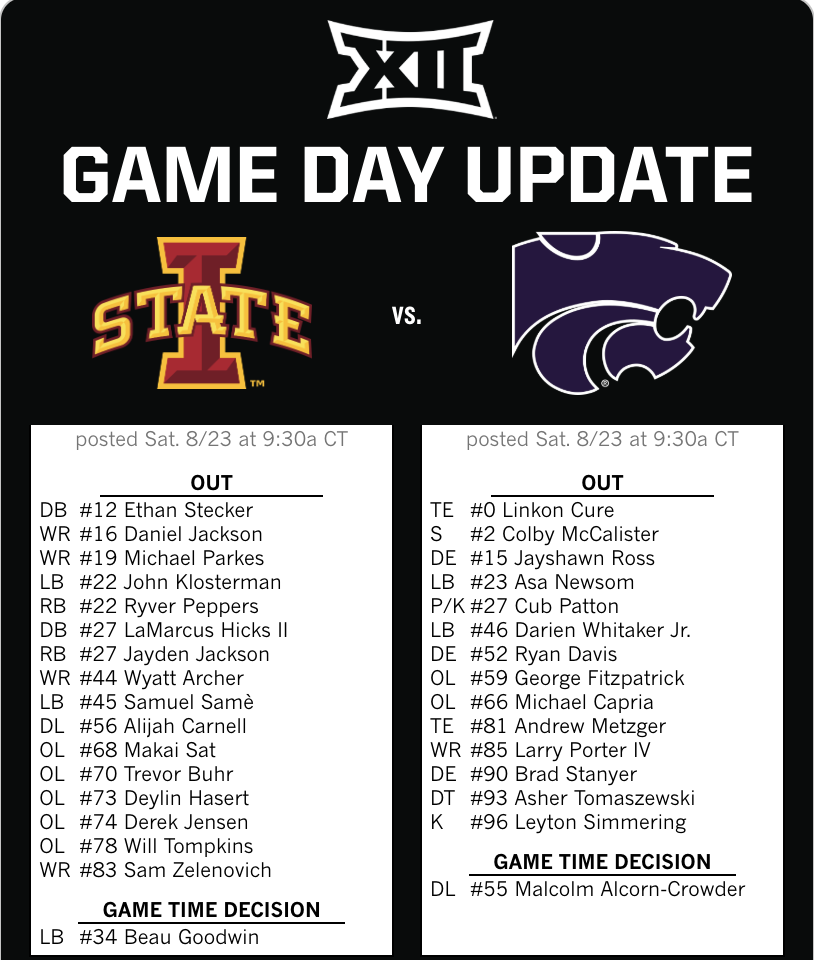It’s as time-honored a Selection Sunday tradition as Charles Barkley picking Auburn to advance to the Final Four.
First the selection committee unveils the NCAA men’s tournament bracket. Then the nitpicking and bellyaching begins.
This year’s committee did a respectable job of choosing which 68 teams belong in the field, but some of its seeding decisions were head-scratching to say the least. Below is a look at what the committee got right and what it got wrong:
What the committee got wrong: Only 3 Big East teams in the field
Conference affiliation, the NCAA is always quick to point out, is not part of the selection process. You don’t select conferences. You select teams.
That’s fine, I guess, but it still doesn’t feel right that the Big East, KenPom’s second-ranked conference in the sport this season, secured only three NCAA tournament bids. The conference that produced the overall No. 1 seed and two other top-three seeds sent one more team to the NCAA tournament than the Atlantic 10 did.
The most egregious snub was probably Seton Hall, which is the first team in the 45-year history of the Big East to finish five games above .500 in league play yet miss the NCAA tournament.
Seton Hall (20-12, 13-7) defeated both UConn and Marquette and won three out of five games against fellow bubble teams St. John’s and Providence. Predictive metrics hovering in the 60s hurt the Pirates, but this team could have — no, should have — replaced Virginia in the NCAA tournament field.
St. John’s and Providence also had a gripe, especially that they were not even among the committee’s last four teams out of the field. The Johnnies (20-13) lacked marquee wins other than a lone victory over Creighton, but they had the best KenPom ranking (25) and second-best NET ranking (32) of any non-NCAA tournament team. Providence was an NCAA tournament-caliber team before Bryce Hopkins’ January ACL tear and went on to beat Creighton twice even in his absence.
Again, the committee will tell you that it properly followed its process, that the tournament cutline just happened to fall right above where three of the Big East’s bubble teams stood. But there’s a reason this is only the second time in Big East history the league settled for just three bids. The Big East deserved better.
What the committee got right: The rest of the bubble
Shortly before midnight on Saturday, people in the selection committee room began sending out some telling tweets about the process of choosing the final at-large teams.
“Been doing this since 2006,” NCAA media coordinator for March Madness David Worlock wrote. “It’s never been this hard for the committee.”
Added Iowa State athletic director and veteran committee member Jamie Pollard: “This year is harder than all my previous years combined.”
This was the rare year in college basketball when there were more deserving NCAA tournament bubble teams than spots in the field of 68. Bubble teams from across the country made valiant last-gasp charges at the same time as a handful of bid-stealers came from nowhere to win their conference tournaments and shrink the number of available at-large spots.
In the end, other than the Big East snub, the committee did a reasonable job of at least getting the right 68 teams into the field.
You want to argue Oklahoma deserved better? Maybe win more than four out of 16 Quadrant 1 games. Porter Moser even made the mistake of resting key players nursing injuries in what turned out to be a must-win conference tournament game against TCU.
You want to push for Pittsburgh? Maybe assemble better than the NET’s 343rd-ranked non-league schedule. Jeff Capel couldn’t have known that West Virginia or Missouri would be this bad when he set up those games, but he probably had an idea that Canisius and North Carolina A&T weren’t any good.
The one omission that hurts to see is Indiana State, which would have made the First Four more fun had it gotten a shot to prove itself against a power-conference opponent. Still, it’s understandable that this was the committee’s second team out considering the spots stolen by bid thieves during conference tournament play.
What the committee got right: The No. 1 seeds
It has been a foregone conclusion for months that UConn, Houston and Purdue would be three of the four No. 1 seeds.
Credit the committee for not messing that up — and for getting it in the proper order.
UConn (31-3) deserved the No. 1 overall seed after it became the only power-conference team to win its regular season and conference tournament on Saturday night. Houston (30-4) earned the No. 2 overall seed after winning the sport’s strongest conference outright and piling up the nation’s most Quadrant 1 wins. And Purdue (29-4) deserved no worse than the No. 3 overall seed after amassing the most top-tier victories, 11 wins over NET Top 25 opponents.
I thought Iowa State deserved more consideration for the final No. 1 seed, but I don’t have any real problem with the committee choosing North Carolina. Both teams had identical 27-7 overall records and 16-7 records in Quadrant 1 and 2 games. The Tar Heels had the higher winning percentage in Quadrant 1 games. The Cyclones had slightly more top-tier wins and had overtaken North Carolina in most NCAA-approved advanced metrics.
What the committee got wrong: So many other seeding decisions
It might be time for the committee to reexamine how much time it spends selecting the field vs. seeding the bracket.
There were so many egregious seeding decisions that it feels like the committee spent too much time on the bubble and ran out of time to spend on the rest of the bracket.
-
It’s one thing to choose North Carolina over Iowa State for the final No. 1 seed. It’s another to rank Iowa State as the worst No. 2 seed. Did anyone in the committee room watch the Cyclones demolish Houston on Saturday night by 28 points? Did anyone notice that their resume and North Carolina’s is virtually identical? To have Iowa State behind Arizona and Marquette is an indefensible decision.
-
The lack of respect for the strongest Mountain West in more than a decade was also perplexing. While the league earned six bids as expected, the committee unexpectedly sent Colorado State and Boise State to the First Four in Dayton when both had resumes superior to other bubble teams. Committee chairman Charles McClelland also described 11th-seeded New Mexico as a “bid thief,” suggesting the Lobos would not have made the field if they hadn’t upset San Diego State in Saturday’s Mountain West title game.
-
So much for the idea that Gonzaga was a bubble team until its big late-season road wins at Kentucky and Saint Mary’s. The committee awarded the Zags a No. 5 seed ahead of teams with stronger resumes like BYU, Texas Tech, Florida and South Carolina. The committee’s seed list has Gonzaga at No. 21 and BYU at No. 17. So perhaps the Zags and Cougars switched places in the bracket to accommodate BYU not playing on a Sunday.
-
Michigan State a No. 9 seed? Florida Atlantic a No. 8? That’s awfully generous for one team with 14 losses and another with losses to the likes of Bryant, Temple, Charlotte and FGCU. The Spartans and the Owls should have been closer to the bubble, perhaps even in the First Four.
-
And lastly, the most baffling seeding decision: Atlantic 10 bid thief Duquesne as a No. 11 seed. The Dukes (22-11) lost to the likes of Fordham and Davidson this year. They have results-based metrics in the 70s and predictive metrics in the 80s, well behind some teams that received 12 or 13 seeds. It feels like the committee slotted the Atlantic 10 tournament winner as an 11 seed no matter who actually was crowned champion. This is a gift of a first-round draw for BYU.





